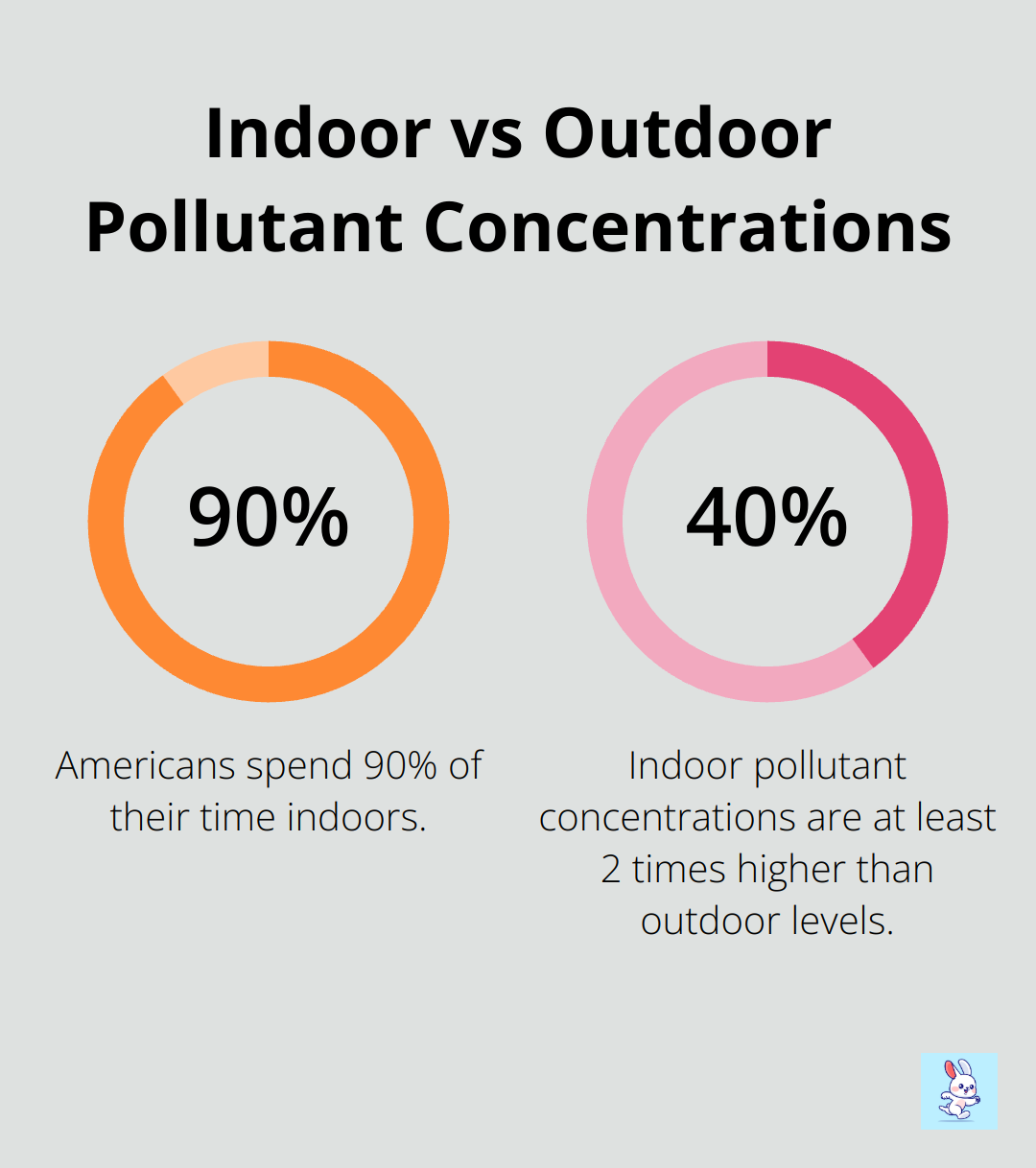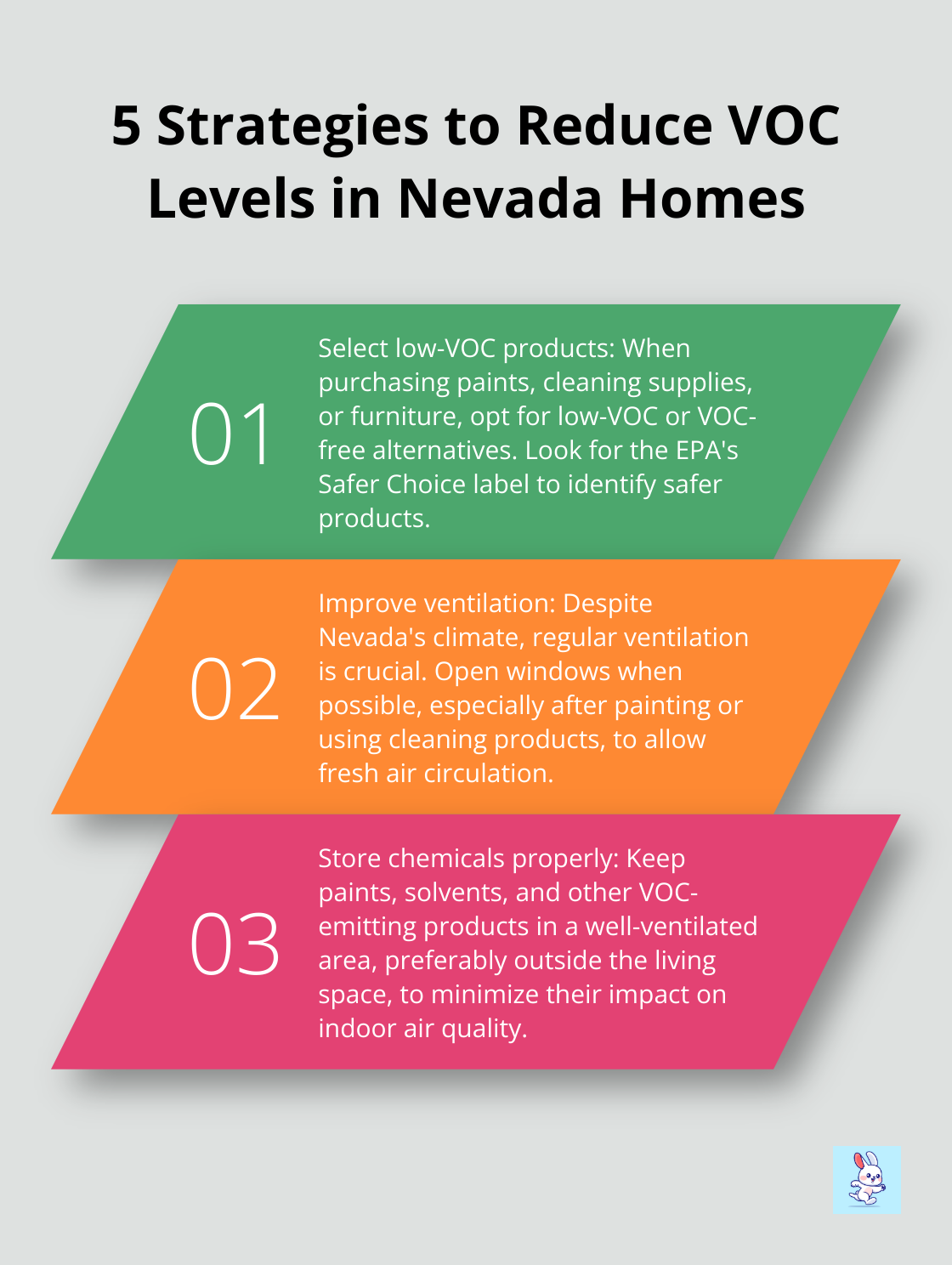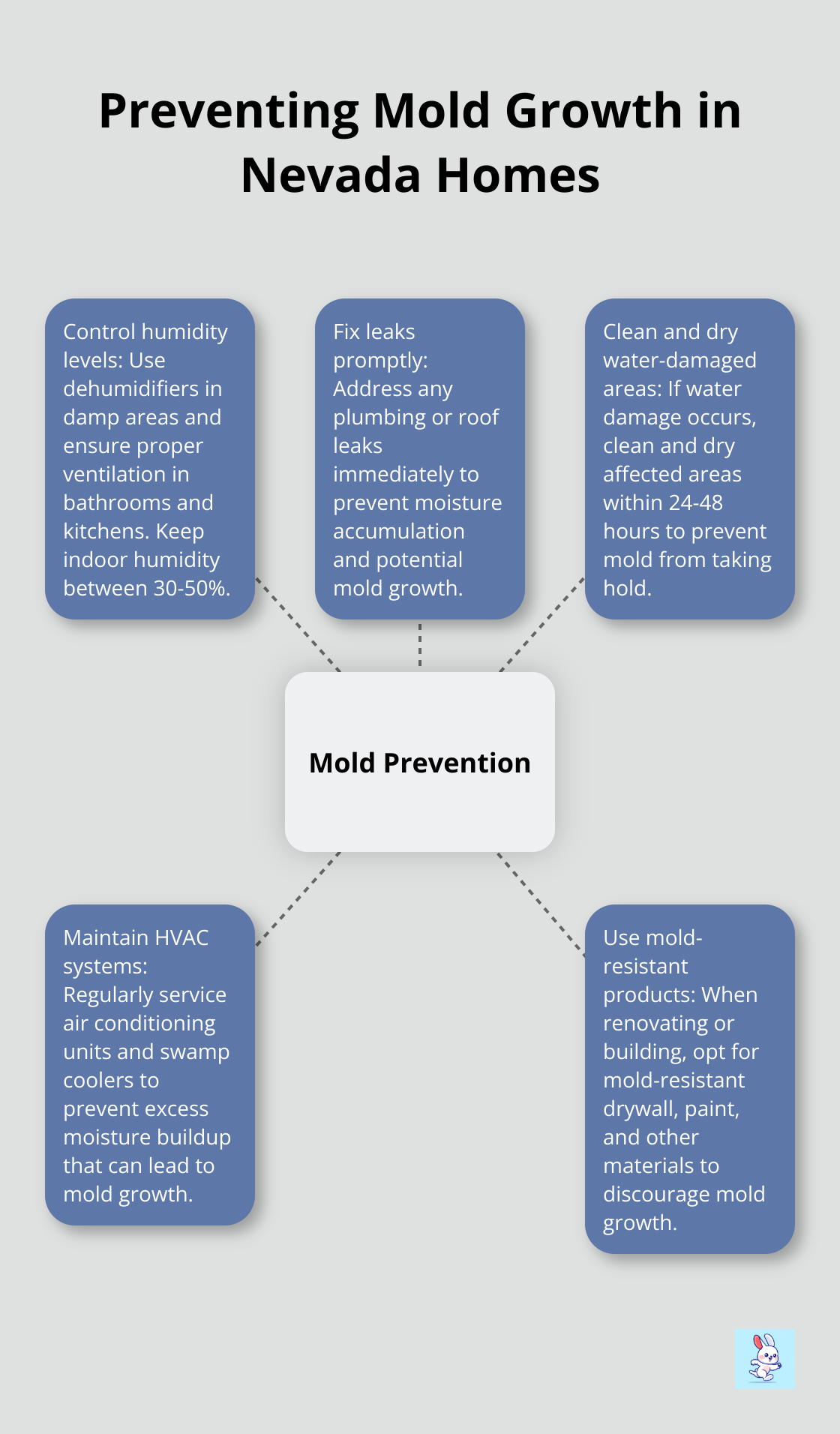Nevada homes harbor hidden dangers that often go unnoticed. Indoor pollutants silently accumulate, posing serious health risks to residents.
At Cleaning Rabbit, we’ve seen firsthand how these invisible threats can impact families across the Silver State. This post will explore the most common indoor pollutants in Nevada homes and provide practical steps to protect your household.
Here’s the modified chapter with the requested changes:
What’s Lurking in Nevada’s Indoor Dust?
The Desert Dust Cocktail
Nevada’s unique desert environment creates a perfect storm for indoor dust and allergens. The dry climate, combined with frequent winds, brings a constant influx of fine particles into homes. Nevada’s indoor dust is a mix of outdoor pollutants and indoor debris. It often contains:
- Fine sand and soil particles
- Pollen from desert plants
- Pet dander and hair
- Skin cells
- Textile fibers
- Microscopic insects (and their waste)
This cocktail of particles can be particularly problematic for allergy sufferers. The Asthma and Allergy Foundation of America reports that about 50 million Americans experience allergies each year, with indoor allergens being a significant trigger.
Health Impacts of Dust Exposure
Long-term exposure to indoor dust and allergens can lead to a range of health issues. The American Lung Association lists several effects of prolonged exposure:
- Respiratory irritation and inflammation
- Worsening of asthma symptoms
- Allergic reactions
- Eye and skin irritation
- Headaches and fatigue
For vulnerable groups (children, the elderly, and those with pre-existing respiratory conditions), these effects can be even more severe.
How Dust Accumulates in Nevada Homes
Nevada’s dry climate means dust doesn’t settle easily. It remains airborne longer, circulating through homes via air currents and HVAC systems. Common accumulation points include:
- Carpets and rugs
- Upholstered furniture
- Curtains and blinds
- Air ducts and vents
- Ceiling fan blades
- Bookshelves and knickknacks
Americans spend approximately 90 percent of their time indoors, where the concentrations of some pollutants are often 2 to 5 times higher than typical outdoor concentrations.

Combating Indoor Dust
To combat this, regular cleaning is essential. However, standard cleaning methods often fall short. Professional services with HEPA-filtered equipment can capture particles as small as 0.3 microns, ensuring a thorough clean that goes beyond surface-level dusting.
Maintaining good indoor air quality requires a combination of regular cleaning, proper ventilation, and periodic professional deep cleans to keep Nevada’s indoor dust at bay. As we move forward, it’s important to consider other silent threats lurking in Nevada homes, such as Volatile Organic Compounds (VOCs), which we’ll explore in the next section.
The Hidden Dangers of VOCs in Nevada Homes
Silent Threats in Everyday Items
Volatile Organic Compounds (VOCs) pose a significant threat to indoor air quality in Nevada homes. These chemicals evaporate easily at room temperature and can have serious health implications when present in high concentrations.
In Nevada’s households, VOCs hide in numerous everyday items. Paint, cleaning supplies, and air fresheners are major culprits, especially in newer or recently renovated homes. The Environmental Protection Agency (EPA) reports that concentrations of many VOCs are consistently higher indoors (up to ten times higher) than outdoors.
Cleaning products, air fresheners, and personal care items also contribute significantly to VOC levels. In the dry Nevada climate, many households use humidifiers, which can release VOCs if not properly maintained. Even seemingly innocuous items like new furniture, carpets, and building materials can off-gas VOCs for months or even years.
Health Impacts of VOC Exposure
VOC exposure can lead to a range of health effects, from minor irritations to severe long-term consequences. Short-term exposure often causes eye, nose, and throat irritation, headaches, and dizziness. The California Air Resources Board has linked prolonged VOC exposure to liver and kidney damage, central nervous system problems, and even certain types of cancer.
Individuals with respiratory conditions like asthma face particular vulnerability. A study by the National Institute of Environmental Health Sciences found that children living in homes with high VOC levels were four times more likely to develop asthma.
Strategies to Reduce VOC Levels
To reduce VOC levels in Nevada homes, consider these practical steps:

Professional cleaning services with HEPA-filtered equipment can help remove particulate matter and reduce airborne VOCs. Regular professional cleaning, combined with these strategies, can create a healthier indoor environment for Nevada residents.
As we continue to explore indoor air quality issues, another silent threat can thrive even in Nevada’s dry climate: mold and mildew. The next section will examine how these fungi can impact your home’s air quality and what you can do to prevent their growth.
Can Mold Thrive in Nevada’s Dry Climate?
Hidden Moisture Sources in Arid Environments
Nevada’s arid environment might seem inhospitable to mold, but this sneaky fungus can still pose a significant threat to indoor air quality. Despite the state’s low humidity, certain conditions in homes can create perfect breeding grounds for mold and mildew.
Mold thrives in damp environments, and Nevada homes aren’t immune to moisture problems. Leaky pipes, roof damage, and poor ventilation in bathrooms and kitchens can create pockets of humidity where mold flourishes. The Environmental Protection Agency (EPA) provides information and guidance for homeowners and renters on how to clean up residential mold problems and how to prevent mold growth.
In Las Vegas, the use of swamp coolers or evaporative coolers is common due to their energy efficiency in dry climates. However, these systems can introduce excess moisture into homes if not properly maintained, creating ideal conditions for mold growth.
Health Impacts of Mold Exposure
Exposure to mold spores can trigger a range of health issues, particularly for those with allergies or respiratory conditions. The Centers for Disease Control and Prevention (CDC) reports that mold exposure can cause symptoms such as stuffy nose, wheezing, and red or itchy eyes. In more severe cases, it may lead to asthma attacks or lung infections in people with chronic lung diseases.
Childhood asthma has been linked to indoor mold growing in a child’s home as a result of moisture problems such as water leaks. This underscores the importance of addressing mold issues promptly, especially in households with young children or individuals with pre-existing health conditions.
Identifying Mold Growth
Detecting mold early is essential for maintaining healthy indoor air quality. Look for visible signs of mold growth, such as dark spots on walls, ceilings, or in corners. Pay attention to musty odors, which often indicate hidden mold problems.
Preventing Mold in Nevada Homes
To prevent mold growth in Nevada homes:

Professional mold inspections (especially in older homes or those with previous mold issues) can help detect and address problems before they become severe health hazards. Regular cleaning with HEPA-filtered equipment can remove visible mold and capture airborne spores, significantly improving indoor air quality.
Final Thoughts
Indoor pollutants in Nevada homes pose serious health risks to residents. Dust, allergens, VOCs, and mold contribute to poor air quality, leading to respiratory issues and long-term health consequences. Regular cleaning and proper ventilation help combat these threats, but standard methods often fall short in effectively removing contaminants.
Professional services offer specialized solutions for improving indoor air quality. CleaningRabbit provides comprehensive services, including air duct cleaning and HVAC sanitation, to remove harmful pollutants from your home. Our equipment captures particles as small as 0.3 microns, effectively eliminating dust, allergens, and other harmful contaminants (including many indoor pollutants).
Take action today to create a cleaner, healthier home environment. CleaningRabbit’s expert team will help you breathe easier and improve your indoor air quality. Contact us now to schedule a professional cleaning service and protect your family’s health.

